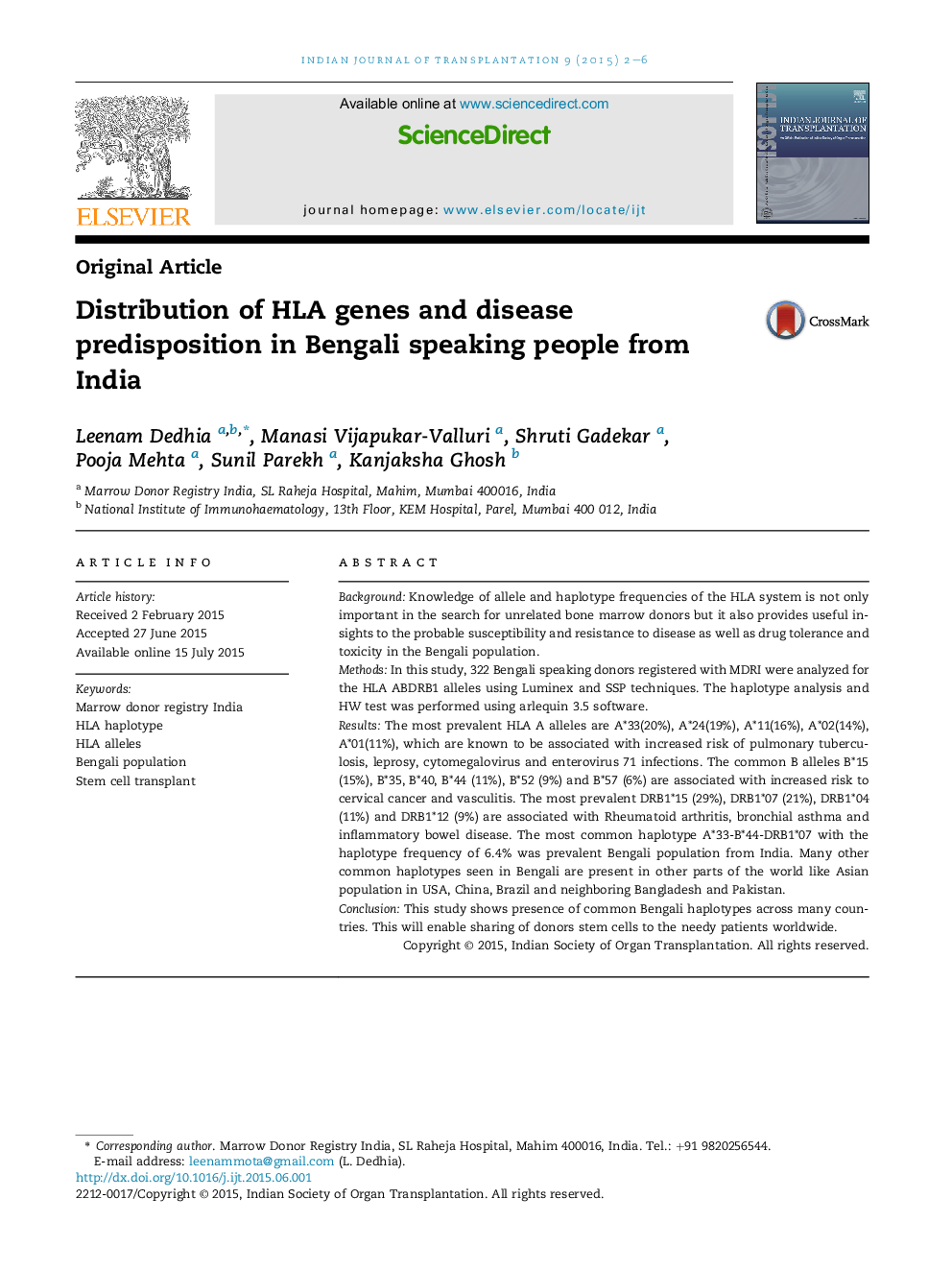| Article ID | Journal | Published Year | Pages | File Type |
|---|---|---|---|---|
| 3338204 | Indian Journal of Transplantation | 2015 | 5 Pages |
BackgroundKnowledge of allele and haplotype frequencies of the HLA system is not only important in the search for unrelated bone marrow donors but it also provides useful insights to the probable susceptibility and resistance to disease as well as drug tolerance and toxicity in the Bengali population.MethodsIn this study, 322 Bengali speaking donors registered with MDRI were analyzed for the HLA ABDRB1 alleles using Luminex and SSP techniques. The haplotype analysis and HW test was performed using arlequin 3.5 software.ResultsThe most prevalent HLA A alleles are A*33(20%), A*24(19%), A*11(16%), A*02(14%), A*01(11%), which are known to be associated with increased risk of pulmonary tuberculosis, leprosy, cytomegalovirus and enterovirus 71 infections. The common B alleles B*15 (15%), B*35, B*40, B*44 (11%), B*52 (9%) and B*57 (6%) are associated with increased risk to cervical cancer and vasculitis. The most prevalent DRB1*15 (29%), DRB1*07 (21%), DRB1*04 (11%) and DRB1*12 (9%) are associated with Rheumatoid arthritis, bronchial asthma and inflammatory bowel disease. The most common haplotype A*33-B*44-DRB1*07 with the haplotype frequency of 6.4% was prevalent Bengali population from India. Many other common haplotypes seen in Bengali are present in other parts of the world like Asian population in USA, China, Brazil and neighboring Bangladesh and Pakistan.ConclusionThis study shows presence of common Bengali haplotypes across many countries. This will enable sharing of donors stem cells to the needy patients worldwide.
